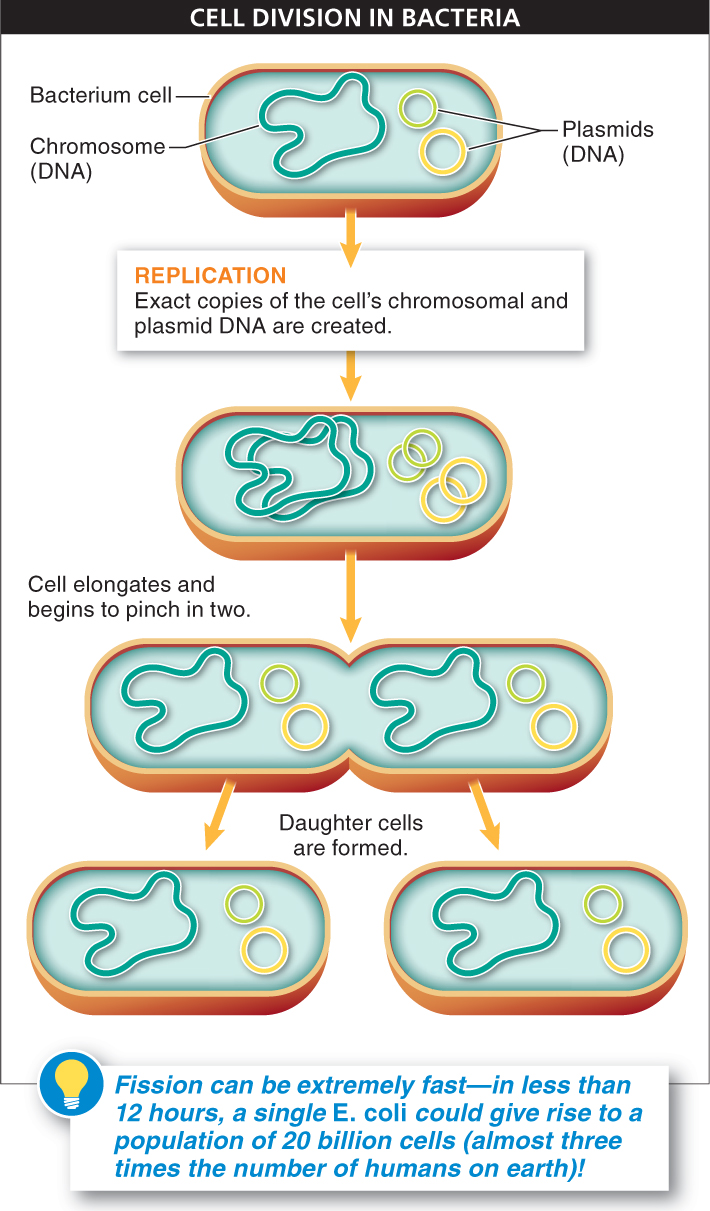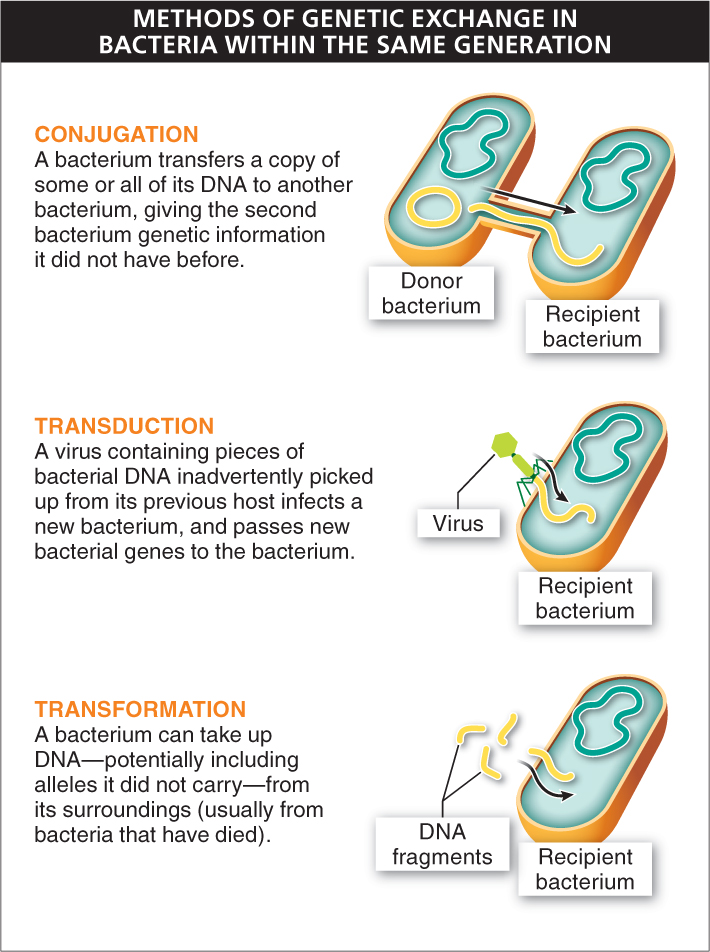13.4: Bacterial growth and reproduction is fast and efficient.

The time it takes for a bacterium to reproduce can be very short; most bacteria have generation times between 1 and 3 hours, and some are even shorter. Escherichia coli, for example, has a generation time of 20 minutes in optimal conditions, so a single E. coli cell could give rise to a population of 20 billion cells in less than 12 hours.
540
Bacteria carry genetic information in two structures: the chromosome and plasmids. The genes that provide instructions for all of the cell’s basic life processes are usually located in a circular DNA molecule, the bacterial chromosome. Most bacteria have just one chromosome, but some have more than one. A bacterial chromosome is organized more efficiently than a eukaryotic chromosome, in two ways. First, in bacteria, the genes that code for proteins with related functions—
A second type of structure that carries genetic information in bacteria is a circular DNA molecule called a plasmid. Plasmids carry genes for specific functions. For example, metabolic plasmids carry genes enabling bacteria to break down specific substances, such as toxic chemicals; resistance plasmids carry genes enabling bacteria to resist the effects of antibiotics; and virulence plasmids carry genes that control how sick an infectious bacterium makes its victim. Many bacteria have one or more (sometimes more than a hundred) plasmids. The strain of E. coli that has made news headlines after causing illness among many patrons of some fast-
When a bacterium divides, it creates two new daughter cells, each “offspring” carrying the genetic information that was present in the chromosome of the mother cell. Thus, binary fission transmits genetic information from one bacterial generation to the next (FIGURE 13-7). However, bacteria can also transfer genetic information laterally—
Q
Question 13.2
What would be the benefit of being able to transfer genetic information directly from one adult human to another?

Conjugation is the process by which one bacterium transfers a copy of some of its genetic information to another bacterium—
Transduction occurs when a kind of virus called a bacteriophage (one type is shown in Figure 13-
541
Transformation is the process by which bacterial cells scavenge DNA from their environment. This DNA comes from other bacterial cells that have burst open, releasing their cellular contents. The circular chromosomes break into short lengths of DNA, which can then be taken up by living bacterial cells and inserted into their own chromosomes, potentially adding genes they did not originally have.
TAKE-HOME MESSAGE 13.4
Bacteria undergo binary fission. They grow rapidly, and their genes are efficiently organized in groups with related functions: virtually all the DNA codes for proteins. Bacteria sometimes carry genes for specialized traits on plasmids (small DNA molecules), which can be transferred from one bacterial cell to another by conjugation. DNA can also be transferred laterally between bacterial cells by transduction or transformation.
Describe the organization of bacterial DNA.